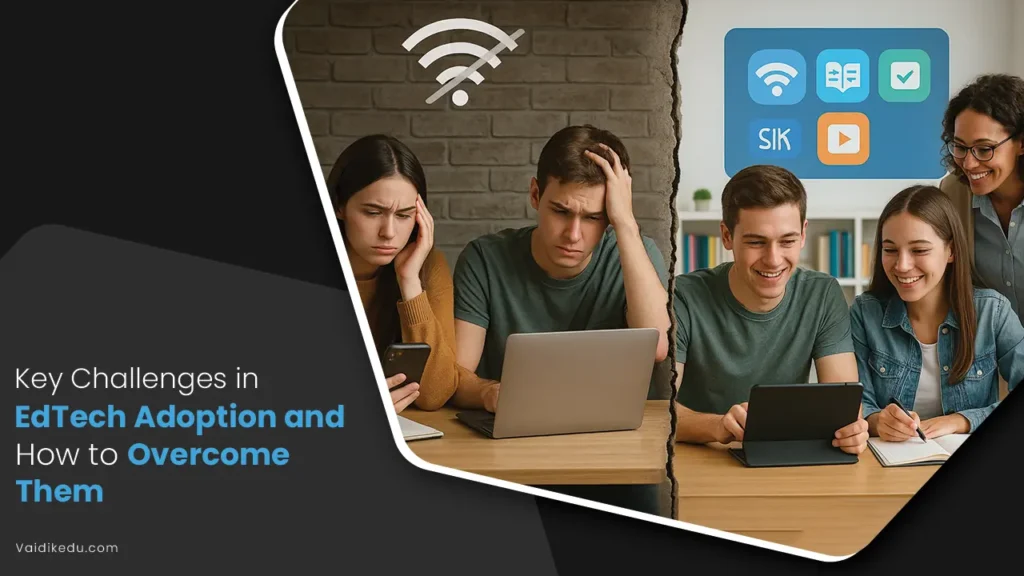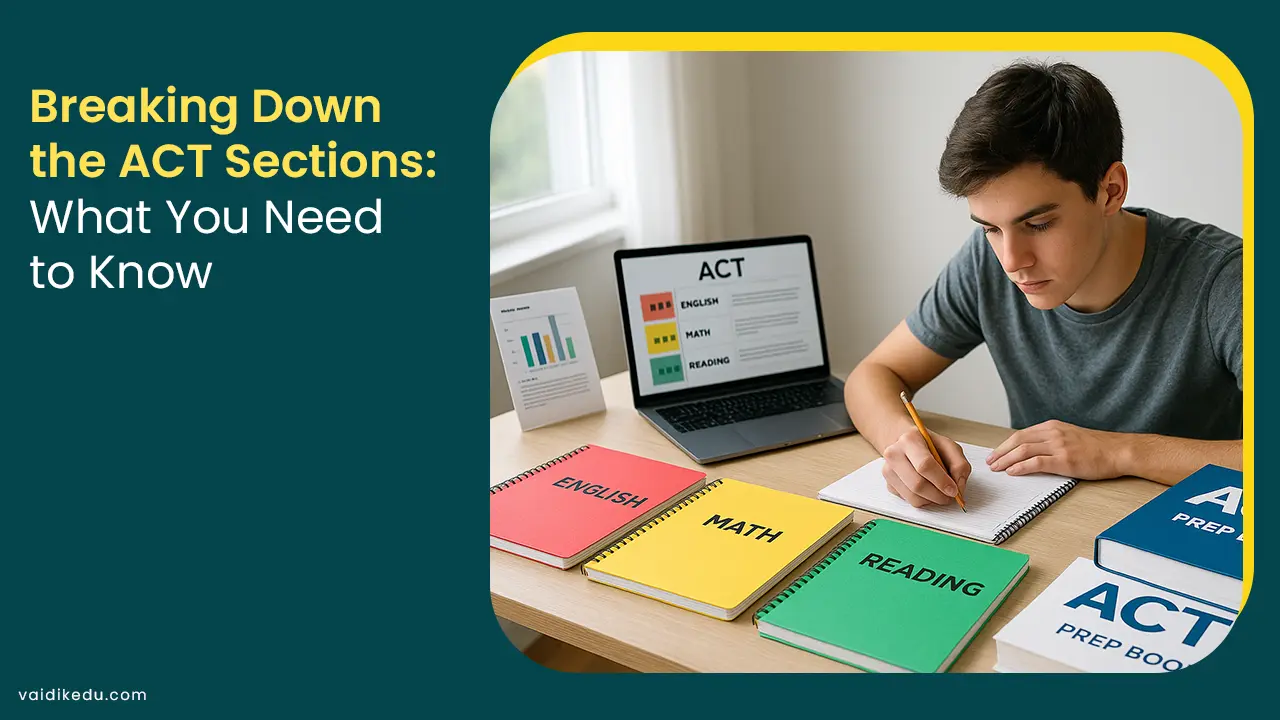EdTech, or education technology, has become an essential element of contemporary learning settings. EdTech has transformed education around the world with its capacity to change conventional classrooms, promote individualized learning, and eliminate barriers to high-quality education.
The tools that are currently accessible to maintain potential, ranging from interactive digital platforms to tutors that are powered by artificial intelligence. EdTech is not without its difficulties, though, much like every revolutionary invention.
Even though EdTech has been adopted by many educational institutions, there are frequent challenges in the way of a smooth incorporation. Obstacles include lack of strong infrastructure, funding constraints, and resistance from teachers who are not tech-savvy.
Further impeding efforts to fully fulfill EdTech’s promise are concerns about data privacy, fair access, and cultural adaptability.
The main barriers to EdTech adoption are examined in this blog, along with practical ways to get around them. Stakeholders can unleash the full potential of technology to transform learning outcomes and experiences by comprehending these problems and taking deliberate measures to address them.
Major Key Challenges
- Opposition To Change
Opposition to change is one of the biggest obstacles to the acceptance of EdTech. Since many teachers and administrators are used to conventional teaching techniques, they see the arrival of technology as a possible challenge to long-standing customs.
A fear of the unknown and a lack of experience with digital technologies are the main causes of this aversion for certain people. They can be concerned about losing control of the classroom or believe that technology lessens the value of face-to-face communication in the classroom.
Additionally, there is much doubt regarding whether EdTech solutions actually improve education outcomes or just make teaching more difficult. Subtle forms of this resistance include unwillingness to participate in training sessions, poor use of digital tools, or outright hostility to suggested modifications.
Developing a growth mentality and establishing an encouraging setting for experimentation are crucial to overcoming this obstacle.
- Inadequate Digital Infrastructure
The absence of proper digital infrastructure is a major barrier to EdTech adoption, especially in underdeveloped or isolated places. Many schools do not have access to adequate power supply, dependable internet connectivity, or the gear required to facilitate digital learning.
Bandwidth restrictions can make it difficult for EdTech systems to function smoothly, even in cities. In underdeveloped nations, where the digital divide exacerbates educational disparities, this problem is much more acute. Due to a lack of basic infrastructure, students in economically poor or rural locations frequently miss out on the advantages of EdTech.
To guarantee fair access to technology for all pupils, governments, non-governmental organizations, and commercial stakeholders must make important investments in order to overcome this barrier.
- High Costs of Implementation
For many educational institutions, particularly those with limited funding, the cost of implementing EdTech solutions is a daunting barrier. Buying hardware, software, and infrastructure can demand a sizable upfront cost.
In addition to these initial expenditures, schools also need to budget for continuing costs like upkeep, improvements, and technical assistance. The cost is further increased by the creation of specialized content and extensive teacher training programs.
Even if they see EdTech’s possible advantages, smaller institutions or those in low-income areas can find these expenses excessive, deterring them from implementing it. By making technology more accessible through subsidies, rebates, or open-source solutions, governments and EdTech companies can lessen this difficulty.
- Data Security And Privacy Issues
EdTech platforms are gathering a lot of data about students, including their personal information, behavioral habits, and academic performance, as they get more advanced. This data raises significant privacy and security concerns even if it is necessary for producing customized educational experiences.
Institutions frequently lack the necessary resources to manage complicated cybersecurity risks or guarantee adherence with strict data protection laws like COPPA or GDPR. Both parents and educators are concerned about possible security lapses that can leave private data vulnerable to abuse or exploitation.
Mistrust and reluctance to embrace EdTech solutions may result from these worries. Strong data security measures and open privacy policies must be given top priority by EdTech companies and educational institutions in order to solve this problem.
- Not Having Tailored Solutions
Often criticized are EdTech solutions’ one-size-fits-all approach and their indifference to the varying needs of educators and students. Regions and educational institutions differ greatly in terms of learning styles, cultural contexts, and educational objectives.
Underutilization or disengagement may arise from standardized platforms not being equally engaging to all students. A platform designed for English-speaking students, for instance, would not be suitable for students in multilingual or non-English speaking regions.
Resources that enhance one curriculum may also not be appropriate or compatible with another. Without customization and flexibility, EdTech may find it more difficult to meet its claimed goals.
- Support And Training For Teachers
Implementing EdTech without providing instructors with adequate training is a surefire way to fail. Even if many lack the technical know-how or self-assurance necessary to use these tools effectively, teachers play a critical role in incorporating technology into the classroom.
Training programs are typically brief and deal mainly with the fundamentals, leaving instructors unprepared to handle difficulties or investigate more complex topics. Teachers often face challenges on their own and lack continuous support.
EdTech tools are underutilized and chances to improve learning outcomes are lost as a result of this lack of support and training. To confidently use technology, educators need to have access to thorough and continuous professional education programs.
- Concerns About Accessibility And Equity
Even if EdTech has the potential to democratize education, it also runs the risk of widening the digital divide. Students from low-income or rural homes might not have access to devices, reliable internet, or digital literacy skills. Due to the two-tiered educational system created by this inequality, only the wealthy can fully employ modern technologies.
Accessibility concerns can affect students with disabilities since they may need specific features or tools that aren’t always offered on mainstream platforms. It will need a coordinated effort to address this issue and guarantee that all students, irrespective of socioeconomic status or skill level, have fair access to EdTech resources.
- Assessing Effectiveness And Influence
The difficulty of quantifying EdTech’s impact and efficacy is one of the less talked-about obstacles to its adoption. Although many platforms claim to improve education, these claims necessitate data analysis and robust metrics.
Establishing precise standards for evaluating whether EdTech solutions are improving student engagement, instructor productivity, or learning outcomes can be difficult for educational institutions. It is difficult to defend the expenses and work required to implement these solutions in the absence of hard data.
Furthermore, it is challenging to compare the efficacy of various methods or techniques due to the absence of standardized assessment frameworks. Through the creation of trustworthy measurements and the use of data analytics, organizations may make informed choices on the use of EdTech.
- Engaging with Current Systems
Integrating new EdTech solutions with current systems and courses is a major difficulty for many educational institutions. Strict administrative procedures, outdated software, and traditional teaching techniques can all impede smooth integration.
For example, inefficiencies and redundant work may arise from a platform that isn’t compatible with a school’s grading software or student information system (SIS). Adapting digital resources to lesson plans or curriculum Development requirements can also be difficult for teachers. To overcome this obstacle, compatibility must be guaranteed, and integration procedures must be closely monitored.
Getting Past The Obstacles
- Fostering A Growth Mentality
Raising awareness of EdTech’s advantages is the first step in overcoming resistance to change. To help educators see how technology can improve learning outcomes, provide workshops, share success stories, and give practical demonstrations. Promote a culture of ongoing exploration and development.
- Infrastructure Investment
To create a strong digital infrastructure, governments, non-governmental organizations, and corporate entities must work together. Broader access to EdTech can be ensured through initiatives including establishing community digital hubs, enhancing internet connectivity, and offering reasonably priced gadgets.
- Making Use of Economical Solutions
To control expenses, institutions might prioritize scalable solutions, negotiate bulk license agreements, and investigate open-source platforms. Financial strains can also be lessened with the use of grants and public-private partnerships.
- Fortifying Data Privacy Procedures
Institutions should implement safe platforms that adhere to data protection laws like COPPA or GDPR in order to resolve privacy issues. To preserve trust, strong cybersecurity safeguards, open policies, and frequent audits are necessary.
- Using Adaptable And Regional Solutions
EdTech companies ought to create flexible platforms that accommodate various learning requirements and regional settings. Adaptive learning features, culturally relevant examples, and multilingual information can all improve effectiveness and engagement.
- Encouraging Teachers
For EdTech adoption to be successful, teacher training is essential. Offer thorough professional development courses, online guides, and continuing assistance to teachers so they can successfully incorporate technology into their lessons.
- Encouraging Access Equity
Institutions and governments must guarantee fair access to EdTech in order to close the digital divide. Leveling the playing field can be achieved by initiatives like device subsidies, free internet access in public areas, and the development of offline-compatible materials.
- Creating Impact Measures
Institutions ought to set precise standards for assessing EdTech solutions’ efficacy. Data analytics technologies can monitor student development, performance, and engagement and offer useful insights to improve tactics.
- Guaranteeing Smooth Integration
Select platforms that work with current curricula and systems. Work together with EdTech companies to personalize solutions and teach employees on integration procedures.
Conclusion
Although EdTech has the potential to completely transform education, there are obstacles to its uptake. These obstacles can appear overwhelming, ranging from high expenses and opposition to change to privacy and accessibility issues. However, these obstacles can be overcome with the correct tactics, teamwork, and an emphasis on inclusivity.
It takes a team effort from educators, administrators, legislators, and tech companies to successfully implement EdTech. We can ensure that every kid has the chance to succeed in a digital environment by tackling these issues head-on and building a future where technology improves learning for everyone.
Frequently Asked Questions
The digital divide can be closed by offering free internet access, reasonably priced devices, and offline resources.
Training guarantees that teachers can maximize the potential of technology by successfully incorporating it into their lesson plans.
Governments may assist the equitable and successful adoption of EdTech by offering financing, infrastructure, and legislation.









